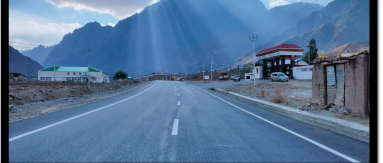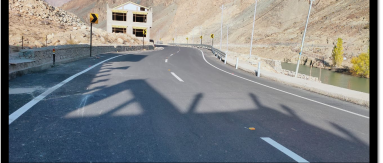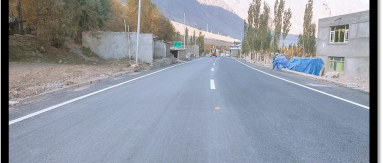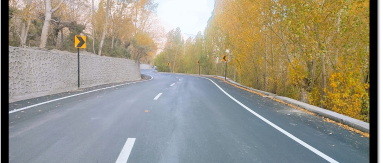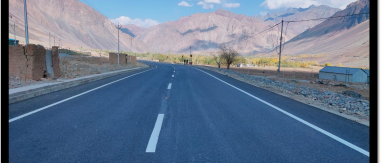- Feedback
- Sitemap
- Skip to Main Content
- Screen Reader Access
- A+ A A -
- A A
- Control Room No. - 9205949400, 011-26768950
Union Territory of Ladakh
National Highways & Infrastructure Development Corporation Ltd.
National Highways and Infrastructure Development Corporation is a fully owned company of the Ministry of Road Transport & Highways, Government of India. The company promotes, surveys, establishes, designs, builds, operates, maintains and upgrades National Highways and Strategic Roads including interconnecting roads in parts of the country.
Corridors
Geographical Location
Nestled in the northernmost reaches of India, Ladakh- now a Union Territory spans approximately 59,146 sq km. With a population of around 274,000- it stands as a land of stark contrasts and surreal beauty. Perched at altitudes ranging from 2,550 to 7,742 metres, it is a high-altitude desert shaped by rugged mountains, deep valleys and ancient cultural echoes.
Often called "Little Tibet," Ladakh reflects the spirit of the Tibetan Plateau, offering a rich blend of heritage, spirituality and adventure. From its snow-draped peaks and lush forests to serene rivers and pristine lakes, Ladakh is a sanctuary for nature lovers and seekers of solitude.
Among its crown jewels is Pangong Lake, a shimmering, endorheic wonder at 4,350 metres. Nearby, Tso Moriri- the largest high-altitude lake in India- sparkles at 4,595 metres, while the salt-rich Tso Kar changes hues across the Rupshu Plateau. Hidden in the Nubra Valley, Yarab Tso offers a secluded escape, its crystal waters mirroring the untouched wilderness of this Himalayan marvel.
- Capital: Leh | Largest City:
- Districts: 7 | Total Area: 59146 sq km
Festivals of Ladakh
The Tibetan New Year, Losar brings communities together to celebrate with the lively Yak and Gomba Sumshak folk dances, marking new beginnings with colour, rhythm and joy.
The Ladakh Festival offers a visual feast with the captivating Khatok Chenmo Dance taking centre stage—an exuberant display of Ladakhi heritage in full splendour. Music is ever-present, from soul-stirring Sufi tunes to melodic folk songs passed down through generations, each note telling a tale of the land’s spiritual depth and history.

Tourist Places

Hemis National Park
Located in eastern Ladakh, this well-known national park was established in 1981 and spans approximately 4,400 sq km. It takes its name from the iconic Hemis Monastery situated within its limits. The park is a haven for wildlife enthusiasts, offering a chance to encounter unique and threatened species such as the elusive snow leopard, Tibetan wolf, Eurasian brown bear and the nimble Bharal, also known as the blue sheep. Its rugged landscapes and high-altitude terrain make it a remarkable destination for nature lovers and trekkers alike.

Mulbekh Monastery
Perched on a hill along the ancient Silk Route that once connected Ladakh with Kashmir, the Mulbekh Monastery holds deep historical and spiritual significance in the Kargil region of Ladakh. Thought to have been established in the 8th century by early Buddhist missionaries, the monastery played a key role in the spread of Buddhism throughout the area.
Its most iconic feature is the towering rock-cut statue of Maitreya Buddha—the Buddha of the Future—which rises nearly nine meters high. This grand sculpture, carved directly into a cliff face, is considered one of the earliest and largest representations of Maitreya in Ladakh. Depicted in a serene seated posture, Maitreya’s right hand is shown raised in a gesture of blessing, while his left hand rests calmly on his lap in a meditative pose. The statue stands as a testament to the rich cultural exchange along the Silk Route and remains a symbol of faith and artistry that continues to inspire visitors and devotees alike.








